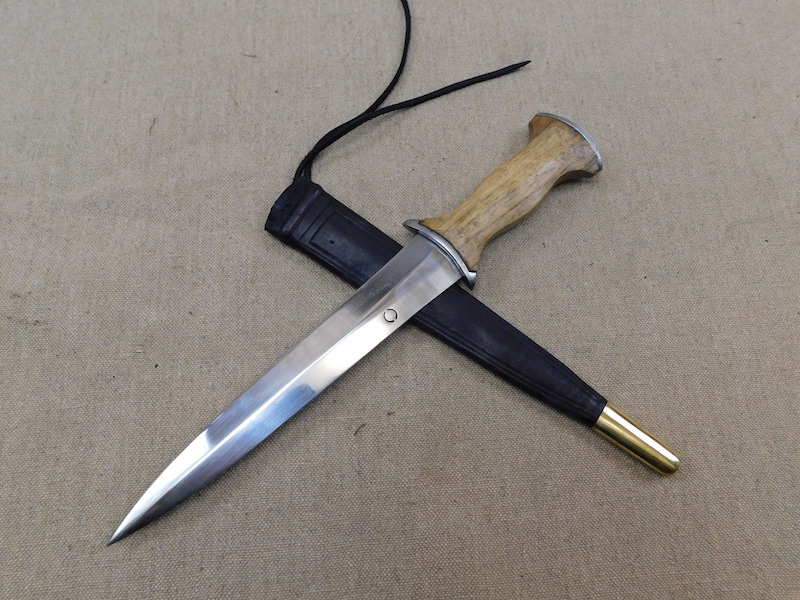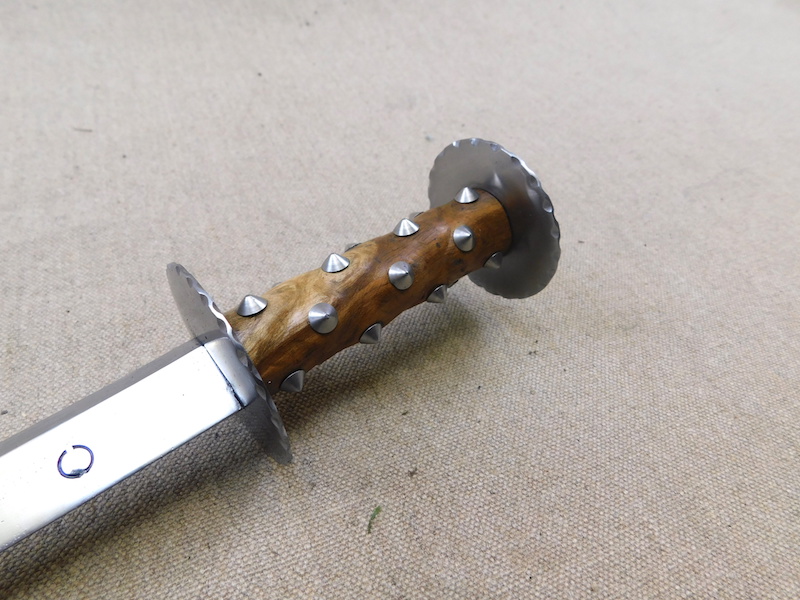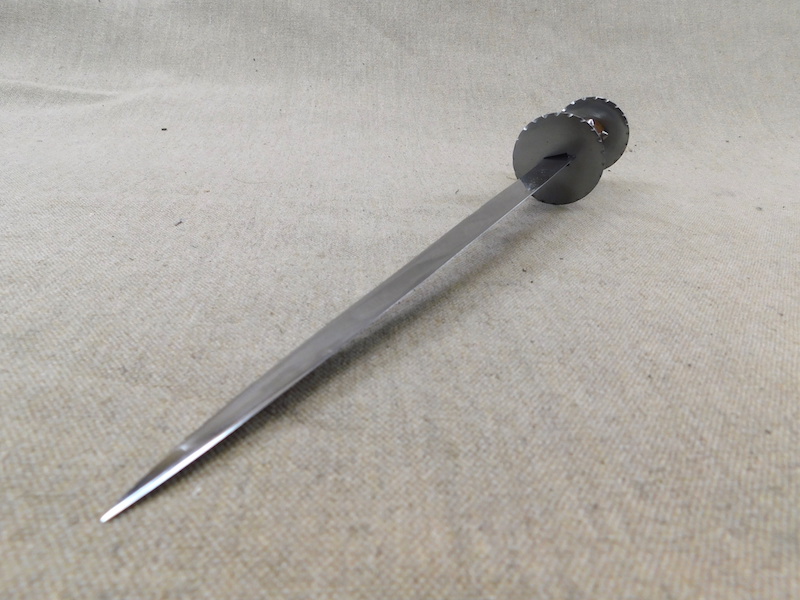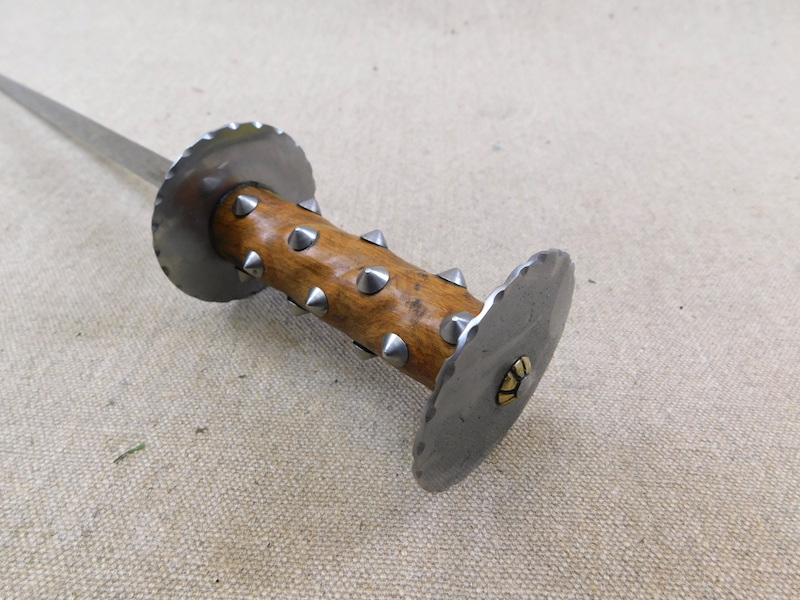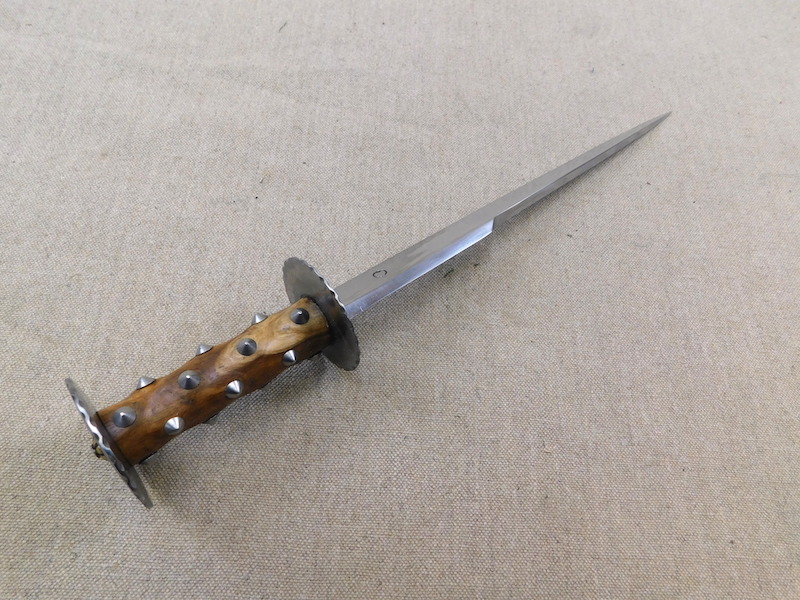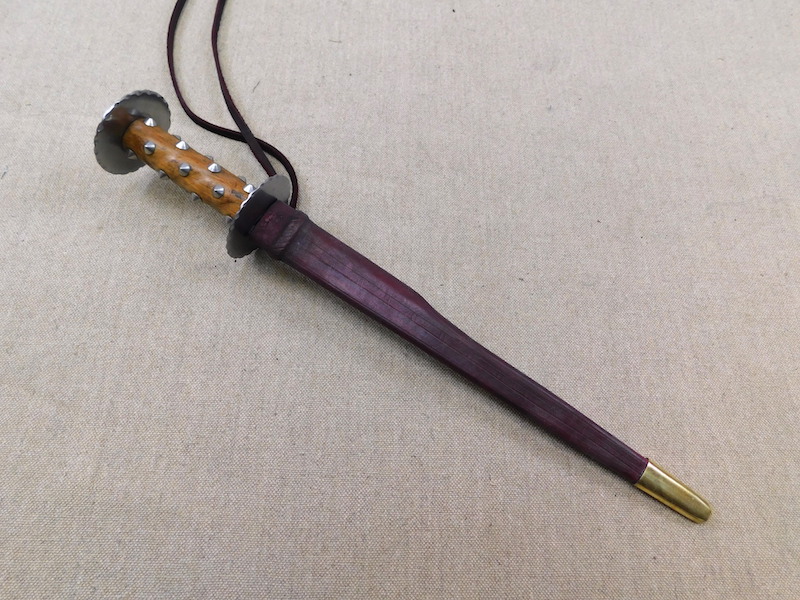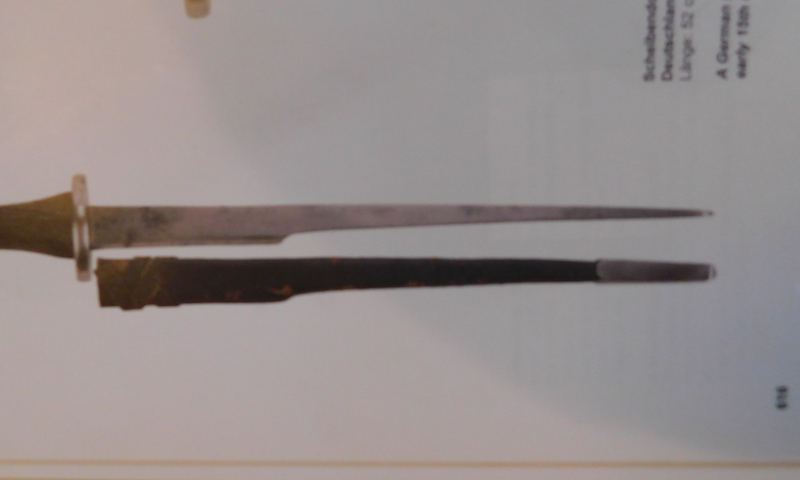Posts: 1,731 Location: Oxford, UK
Thu 29 Nov, 2018 3:35 pm
I was going to string these out, but decided to due to work racing me off into the distance again that I will release them all together, so here are the next 5 in one go.
English/Italian Baselard
The medieval Baselard dagger was very popular throughout Europe from Italy through to Scotland and everywhere in-between, but strangely, they had two very different forms. In England and Italy the dagger had a very 'capital H' form and this is a classic example of this type.
The two arms are 'pinched' out from the same width as the blade, so the grip is quite narrow and the blade quite wide, and usually with either a fuller or a flat, so the blade transitions from a diamond to a hexagonal form near the hilt.
These were current and common all through the 14th and 15thC from the low born like Wat Tyler, through to knights and their effigies.
Overall length 44cm/17"
Blade length 31cm/12"
Grip length 10cm/4"
Dirk
The
Scottish Dirk was the classic dagger of both the Highland and Lowland Scots from the early 17thC through to the modern day as a Regimental weapon.
The Dirk developed on from the
bollock dagger through the Dudgeon dagger to this simple early form. The Scottish Dirk is characterised by a small barrel shaped grip with a stylised version of the bollock daggers' balls and a brass cap and impact plate and a long blade. The pommel cap is perforated with a heart motif; again a classic detail of the time.
Overall length 49cm/19"
Blade length 38cm/15"
Grip length 7cm/2.75" (The hand grips down onto the 'balls')
Dudgeon
The Dudgeon dagger is the classic dagger from the north of England and the Scottish lowlands at the time of the Border Reivers in the late 16thC and early 17thC.
It is a short lived form of dagger that filled the gap between the bollock dagger and the Scottish Dirk. The dagger is compact and very handy, and has a very stiff flat backed blade perfect for those dark night cattle raids. Available semi-sharp (around 0.8mm 1/32" edge) only.
Overall length 36cm/14"
Blade length 25cm/9.75"
Grip length 9cm/3.5"
Swiss German baselard
The medieval Baselard dagger was very popular throughout Europe from Italy through to Scotland and everywhere in-between, but strangely, they had two very different forms.
The Swiss/German form has a 'rat tail' tang through the grip and curved steel guards top and bottom. The blade is robust, short, wide and transitions from a diamond section to a hexagonal form near the guard with a very slight flare.
Overall length 36cm/14"
Blade length 23cm/9"
Grip length 10cm/4"
Mary Rose bollock dagger
The iconic bollock dagger developed all through the 14th and 15th centuries, moving from a utility weapon, through to a high status piece and back by the middle of the 16thC, to a utility weapon.
This particular style of dagger was characterised by those found on the Mary Rose ship wreck. The blade is single edged and long, the hilt is flatter than earlier versions and features a brass impact plate at the base of the balls and the tang is finished with a brass peen washer.
Overall length 44cm/17"
Blade length 32cm/12.5"
Hilt length 9cm/3.25"
I hope you like them and if there are any questions or comments, please ask.
Tod
 Attachment: 174.18 KB
Attachment: 174.18 KB
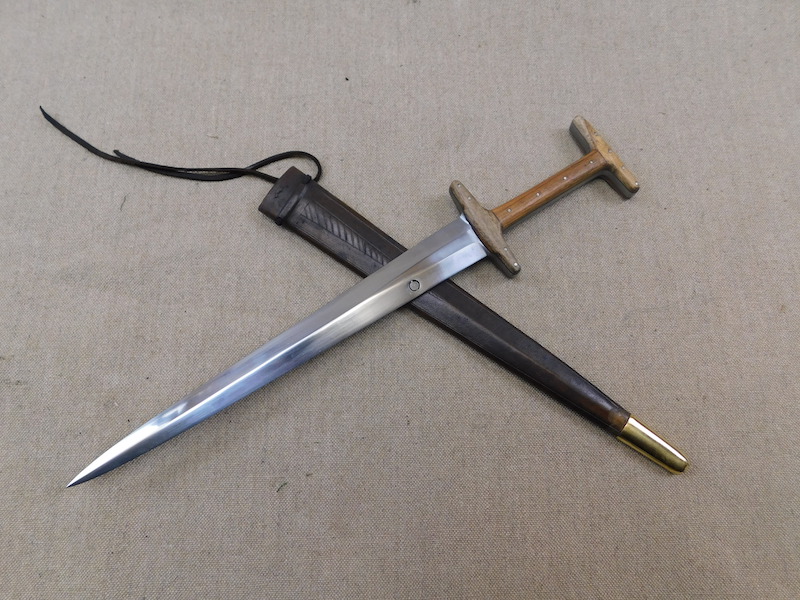
 Attachment: 177.77 KB
Attachment: 177.77 KB
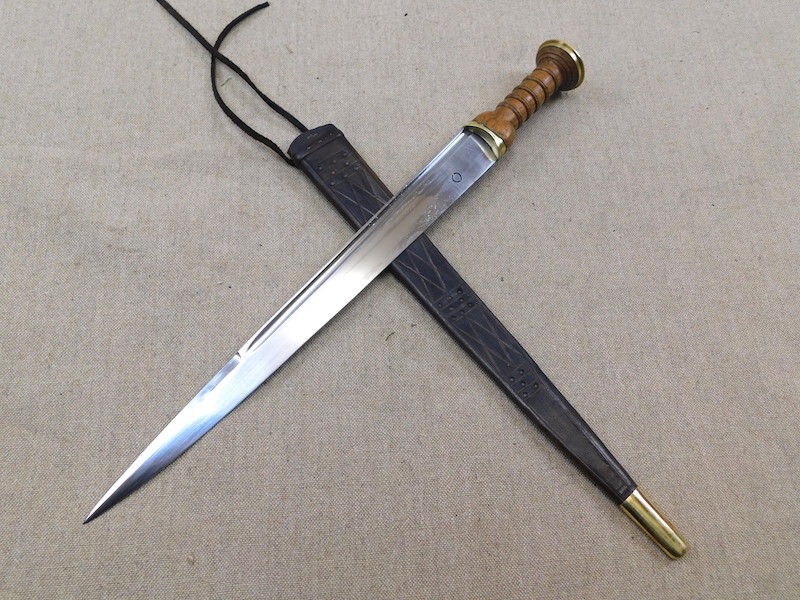
 Attachment: 196.9 KB
Attachment: 196.9 KB
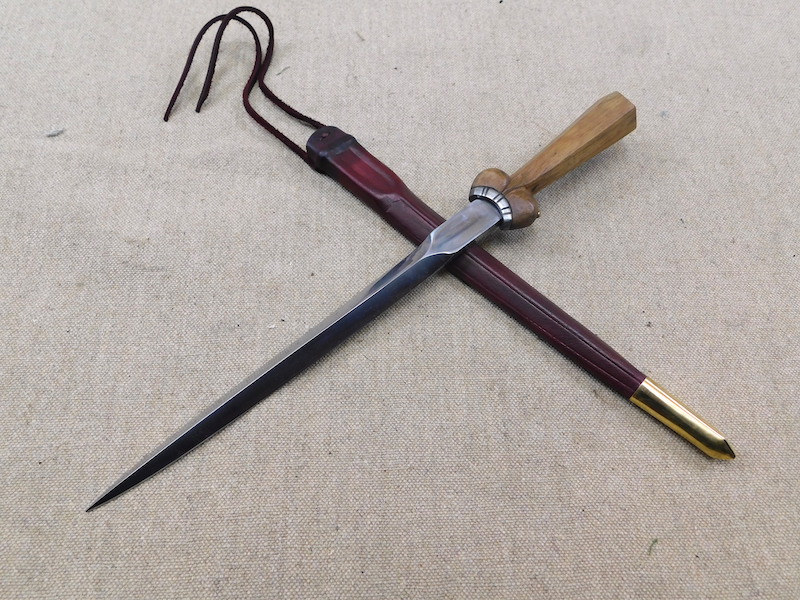
 Attachment: 185.89 KB
Attachment: 185.89 KB
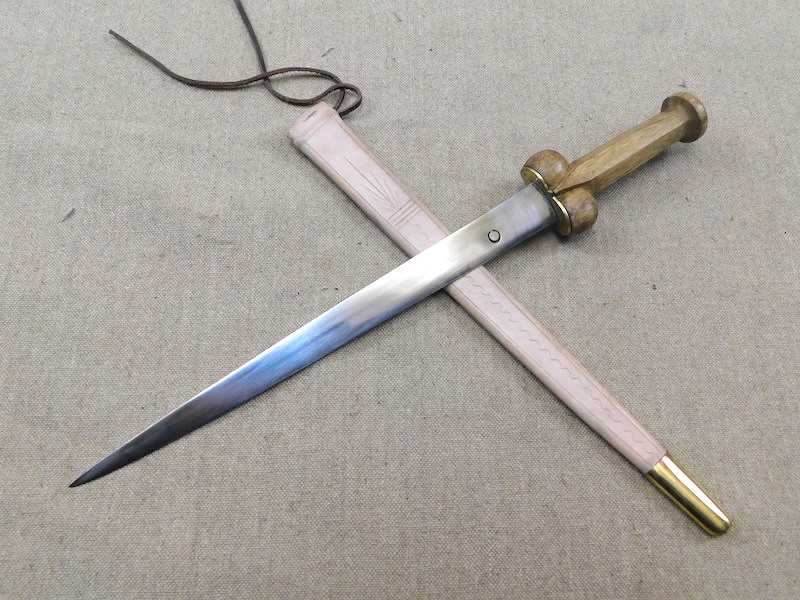
 Attachment: 180.29 KB
Attachment: 180.29 KB
